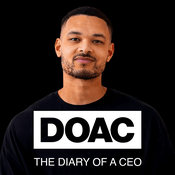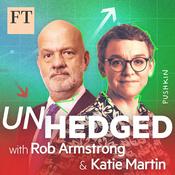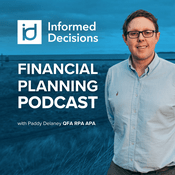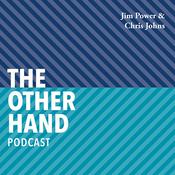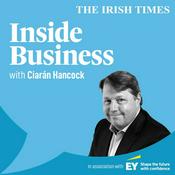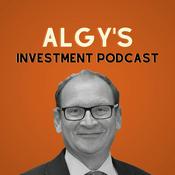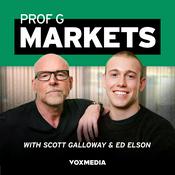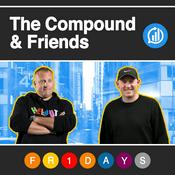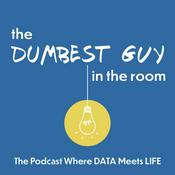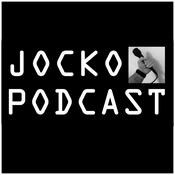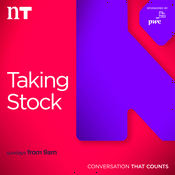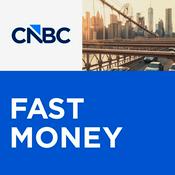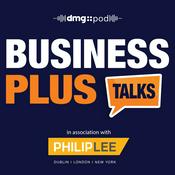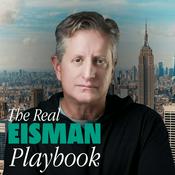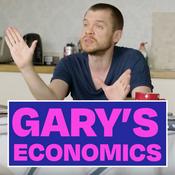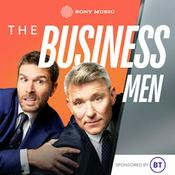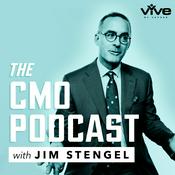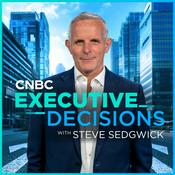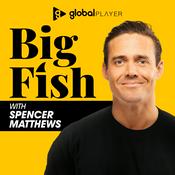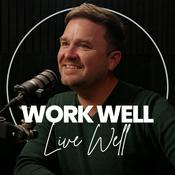231 episodes
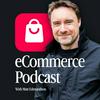
Fix Your Pop-Up Strategy and Hit Over 10% Opt-In Rates
18/12/2025 | 50 mins.
Most eCommerce brands settle for pop-up opt-in rates of 3-5% whilst competitors achieve 10-15%. Shaan Arora, CEO of Alia Popups, reveals the systematic testing approach used by 3,000 brands including Peloton and Nike to dramatically improve email collection without destroying margins.We explore why copy matters more than design, how mystery discounts outperform fixed offers, the difference between mobile and desktop timing, and why holdout tests prove pop-ups increase both conversion rates and AOV despite the annoyance factor. Shaan shares data-driven insights from 100 million monthly pop-up views.Key Point Timestamps:02:17 - The biggest pop-up problem brands face04:55 - Mystery discount strategy that increases opt-ins08:08 - Alternative offers beyond discounts18:59 - Testing discount percentages systematically24:17 - What's a good opt-in rate?26:42 - Segmentation and personalisation28:36 - Are pop-ups worth the annoyance?37:06 - Copy, timing, and design priority order46:23 - Building a personal brand as founderThe Mystery Discount Strategy (04:55)One of the easiest wins comes from a simple copy change that doesn't touch your margins at all. Instead of revealing your 10% discount upfront with "Get 10% Off Your First Order", try copy like "Unlock Your Mystery Discount" or "Claim the Discount You've Earned.""A lot of brands believe that in order to get a really good opt-in rate, you need to give a pretty crazy offer," Shaan explains. "We've seen brands that have early access pop-ups without even an offer that gets to about 10% opt-in rates."Same 10% discount. Different psychology. Brands see large increases in opt-ins without changing the actual offer because humans can't resist finding out what they've "earned." The curiosity gap works.Testing Discount Percentages (18:59)Before assuming you need to offer 20% or 30% off to achieve decent opt-in rates, test. Shaan urges brands to test 20% against 15%, or 15% against 10%. Track not just opt-in rates but also conversion rate, bounce rate, AOV, and revenue from codes."We've had brands that have done 20%, gone down to 15% and pretty much had the same results for opt-in rates," Shaan shares. That's a 5% margin improvement without losing performance.The data shows that when cashback is tested against discount, discount wins but sometimes only by 30% - not such a huge percentage that it's definitively worth the margin hit.The Priority Order: Copy, Timing, Design (37:06)Most brands obsess over design first, which is the wrong priority. Shaan's data from 3,000 brands reveals a clear hierarchy."Copy is number one by far and away the most important thing to test," Shaan emphasises. "What copy can resonate well. Like 'You've got 15% off,' 'You've earned 15% off,' 'Here's 15% off,' 'Here's a mystery discount.' All of these things are the biggest thing to move it."Timing comes second - when exactly the pop-up appears matters, especially across mobile versus desktop. Design lands third, including what creative to show and whether to show creative at all.The Holdout Test Everyone Should Run (28:36)Shaan's team makes it extremely easy to run holdout tests: pop-up versus no pop-up, measuring conversion rate and average order value. The results are clear."Across the board, on pretty much every single test we've run with this, we see CVR and AOV go up when you have a pop-up versus when you don't have a pop-up," Shaan reveals.Even people who immediately close the pop-up benefit from knowing a discount exists. They're aware that when they're ready to check out, a code is waiting for them somewhere, and just knowing that increases purchase likelihood.Today's GuestToday's guest: Shaan...

Stop Guessing Your Site Structure and Fix Your SEO
11/12/2025 | 48 mins.
Most eCommerce stores with large product catalogues share a common problem that quietly kills growth. It's not their products, pricing, or marketing budget—it's their site structure. Sam Wright, founder of Blink SEO and creator of Macalytics, reveals why taxonomy is the biggest drag on growth for stores doing £3-5 million annually, and exactly how to fix it using Search Console data.We explore why collection pages represent 35% of all search impressions (more than products and blogs combined), how to determine the right level of granularity for your categorisation, and why most stores aren't deep enough with their subcategories. Sam shares his framework for using Search Console impression data to identify exactly where to create new collection pages, and explains the critical difference between what works for user experience versus what search engines can actually index.Key Point Timestamps:06:30 - The Large Catalogue Challenge11:45 - Why Collection Pages Are Your Biggest SEO Opportunity16:20 - The Granularity Problem Most Stores Face22:15 - Using Search Console Data to Guide Taxonomy27:40 - Real-World Example: Redesigning for Better Structure35:10 - Future-Proofing for AI Search with Persona Data42:30 - The AI Shortcut and Critical WarningThe Large Catalogue Challenge (06:30)Sam defines large catalogue stores as those where the buying journey tips into a different mode—one based around comparison and filtering rather than simple browsing. This typically happens around 250 products, though it varies by category."With large catalogue stores, the buying journey is based around comparison and filtering," Sam explains. "A lot of the time these stores have grown up organically over a period of time and no one's taken ownership about how the store's organised."This organic growth creates a drag on everything—SEO, user experience, conversion rates, even email segmentation. Stores reach £3-5 million in annual revenue, so things are fundamentally working. But growth isn't happening as fast as it should because nobody stepped back to think strategically about organisation and purpose.Why Collection Pages Are Your Biggest SEO Opportunity (11:45)Sam shared compelling data from across all the Shopify stores his agency works with: "It's about 35% of all impressions come on collections, which is much more than products and blogs. It's basically the entry point for most people when they're doing actual new product discovery."More than a third of search visibility comes from collection pages—the pages where new customers first encounter the store. Yet most stores aren't categorised in a way that aligns with how people actually search for their products.This represents a massive untapped opportunity. If collection pages are already driving 35% of impressions without optimisation, imagine the potential when they're properly structured and aligned with search behaviour.The Granularity Problem Most Stores Face (16:20)The real opportunity for most stores lies in going deeper with categorisation. Much deeper."Most people are not granular enough with their categorisation," Sam emphasises. "A lot of stores will just have a t-shirts category. They won't subcategorise those t-shirts to the level that matches how people are actually searching."Sam uses sofas as an example: "So sofas as the parent category, like blue sofas, blue four seat sofas, blue four seat corduroy sofas. That filtering process, that is how people do search."The challenge on Shopify is that these filters aren't indexable for search engines. Google ads can't effectively target filters either. The solution is breaking out popular subcategories into actual collection pages."The real opportunity for a lot of stores is how deep you go in that categorisation because you've got products that other people...

The One Video Per Week YouTube Strategy for eCommerce Businesses
04/12/2025 | 49 mins.
What if one video per week could generate referral-quality leads for your eCommerce business? Nate Woodbury reveals how to leverage YouTube's search algorithm instead of chasing viral views, creating educational content that brings dream customers directly to you.Episode SummaryWe explore how eCommerce businesses can generate consistent, high-quality leads through strategic YouTube content. Nate Woodbury, who has produced over 60 YouTube channels, shares his Leaf Strategy—focusing on answering specific 8+ word questions with low search volume (as few as 10 searches per month) to build authority systematically. Rather than competing for viral views, this approach prioritises educational content that ranks quickly on YouTube and Google, attracting customers who are actively searching for solutions.We discuss why 10-12 minute videos create the optimal trust-building window, how to research golden questions using keyword tools, and why wrong audience growth from viral videos can actually damage your channel. Nate reveals his testing results showing YouTube Shorts only drove 0.1% increase in long-form views, and shares the entrance point strategy that guides viewers from YouTube to your email list without feeling sold to.Key Point Timestamps:05:11 - Entertainment vs Educational YouTube Strategy12:17 - The Leaf Strategy: Starting with Low Search Volume13:41 - Finding Questions with 8+ Words28:02 - The 10-12 Minute Sweet Spot36:20 - The Entrance Point Strategy40:22 - YouTube Shorts Testing Results42:23 - When Viral Videos Hurt Your ChannelEntertainment vs Educational YouTube Strategy (05:11)Nate distinguishes between two fundamentally different approaches to YouTube. Most advice focuses on entertainment—creating content that appeals to the broadest audience to generate ad revenue through viral views. But there's a completely different algorithm at play for businesses."There's multiple algorithms on YouTube," Nate explains. "Most of the advice we hear is geared towards having our videos go viral so we can get as many views as possible. But we can actually focus instead on search."This distinction changes everything. Entertainment content interrupts people and requires breaking through resistance. Educational content serves people who are actively seeking answers, meeting them exactly where they are. For eCommerce businesses with educational components—supplements, complex products, or anything requiring customer education—this search-focused strategy generates referral-quality leads rather than just views.The Leaf Strategy: Starting with Low Search Volume (12:17)Nate uses a tree analogy to explain his approach. The trunk represents broad topics like "nutrition." Branches are categories like "nutrition for weight loss." And leaves are the specific questions people type into search engines.Most businesses chase the trunk and big branches—terms with thousands of monthly searches and massive competition. Nate's approach flips this entirely: start with questions that only get 10 searches per month."I consider that gold," Nate shares. "That's probably going to turn into lead generation every single month, even if there's just 10 searches a month."The beauty is speed and certainty. With minimal competition for highly specific questions, videos rank at the top of YouTube and Google within a day or two. As you dominate more specific questions on a particular branch, the algorithms recognise your authority on that entire topic, eventually allowing you to rank for bigger terms—but you've built authority from the ground up.Finding Questions with 8+ Words (13:41)The key to this strategy is finding the right questions. Nate recommends Semrush's Keyword Magic Tool (with a free trial at herokeywordtool.com), but uses it differently than traditional SEO.Rather than looking for...

The Power of Simply Saying Thank You
27/11/2025 | 44 mins.
On Thanksgiving Day, whilst American families gather to express gratitude, eCommerce businesses gear up for the most transactional weekend of the year. Matt Edmundson explores why businesses that win long-term aren't those with the best Black Friday discounts, but those that genuinely appreciate the humans behind the transactions.Episode SummaryMatt shares the Gratitude Audit - a three-level framework distinguishing between no appreciation, automated appreciation, and personal gratitude. Through the story of transforming a beauty business that achieved 40% repeat purchase rates and 20% revenue growth, he demonstrates how culturally embedding thankfulness creates customers who become brand evangelists. The episode reveals why automated loyalty schemes create entitlement whilst personal touches compound loyalty, supported by research showing grateful customers are 23% more profitable.Key Point Timestamps:03:00 - The Problem with Automated Gratitude06:00 - Have We Missed the Simplicity of Gratitude?08:00 - The Gratitude Audit Framework14:00 - What Makes Gratitude Actually Work18:00 - Implementing Gratitude Without It Feeling Fake26:00 - Why This Actually Matters During Black Friday31:00 - Your Thanksgiving ChallengeThe Problem with Automated Gratitude (03:00)Matt compares two experiences of receiving something free: getting his tenth burrito automatically at Barburrito versus Emirates unexpectedly upgrading him to first class. Both were technically free, but elicited completely different emotional responses."I get my tenth burrito free at Barburrito. It's automatic and completely predictable. I just scan my app and it's done. I know it's coming because that's how loyalty schemes work. And you know what I feel when I get it? Nothing much. Well, that's not quite true. If I'm honest, I kinda feel entitled to it."The Emirates upgrade, five years later, still gets mentioned. The difference? Automated appreciation has diminishing returns whilst personal gratitude compounds over time. Research shows gratitude is heightened when customers perceive actions as discretionary rather than obligatory.The Gratitude Audit Framework (08:00)Matt introduces three levels of customer appreciation that most businesses move through:Level 1: No Appreciation - Where most eCommerce businesses live during busy periods. Functional and transactional: "Your order #827364 has been shipped." It's not rude, but it's nothing.Level 2: Automated Appreciation - Loyalty schemes, automated thank you emails, points systems. Better than nothing, but automation removes the perception of free will, creating contractual obligation rather than gift.Level 3: Personal Gratitude - Where Emirates upgrades and handwritten notes live. Where real human connection happens. Personal gratitude compounds over time rather than diminishing, and it doesn't have to be expensive - it has to be genuine.What Makes Gratitude Actually Work (14:00)Matt shares how transforming a beauty business around customer service - which really means finding ways to say thank you more genuinely - led to remarkable results. The team implemented handwritten notes, reached out when customers purchased multiple times, and allocated £50 SMOCs budgets (Sexy Moments of Customer Service) to warehouse and customer service staff."We allocated a budget of £50 to our warehouse and customer service teams. They could spend that money on a customer without prior authorisation. Just creating moments that mattered."Matt would randomly pick orders and include personal notes with his direct email. Rather than creating entitled customers, it created reverent appreciation. Over 18 months, overall turnover increased by 20% from repeat customers, with repeat purchase rates shooting above 40%.Implementing Gratitude Without It Feeling...

Why Your Website Is Too Complicated (And How To Fix It)
20/11/2025 | 47 mins.
After building over 200 Shopify stores, Ben Sharf has discovered that nearly every e-commerce brand—whether doing $1 million or $50 million annually—describes their website as a source of frustration rather than growth. In this episode, we explore why complexity has become the norm and exactly how to fix it.Ben, co-founder of Platter, shares insights from working with brands that have accumulated technical debt through widget overload, deleted apps that leave code behind, and convoluted customer journeys that kill conversions. We dig into his three-part simplification framework, the power of cart drawers over cart pages, and why revenue per visitor matters more than you think.Key Point Timestamps:05:00 - Why e-commerce websites frustrate every brand09:30 - The widget overload problem destroying your site speed14:20 - Deleted apps leave code behind (and slow you down)17:40 - The three-part simplification framework22:30 - Revenue per visitor: the metric you're not tracking31:00 - How to optimize clicks to purchase35:40 - Mobile simplification mistakes killing conversionsWhy E-commerce Websites Frustrate Every Brand (05:00)Ben's journey into e-commerce infrastructure began at GoPuff, where he built an instant delivery business unit. Whilst partnering with brands of all sizes, he encountered the same pattern repeatedly: every single brand had a horror story about their website."E-commerce is literally selling a product on the internet," Ben reflects. "Why is the main thing the most frustrating thing for every brand out there?"The answer lies in how traditional development agencies operate. When agencies get paid for their time, they're incentivised to make things expensive and complicated. This creates an industry-wide problem where brands pay enormous sums for solutions that should be straightforward, resulting in websites burdened by excessive code, countless third-party apps, and convoluted customer journeys.The Widget Overload Problem (09:30)One of the biggest contributors to website complexity is what Ben calls "widget overload"—the tendency to add small applications for every specific functionality."A lot of these apps are features, not products," Ben explains. "If you piece a million together, you end up having a lot of different single points of failure within your storefront."The Shopify app ecosystem, whilst brilliant for getting started, creates a temptation to solve every problem by installing another app. Before long, brands find themselves managing dozens of applications, each adding code to their storefront, each creating potential conflicts.Ben shares a typical scenario: "We'll talk to a brand doing $20 million on their storefront. Over the last seven years, they've had five different agencies, seven different freelancers, and 150 apps installed and deleted—all on the same storefront. What do you think happens when the next person tries to go in and touch that? It's just a spider web."The Hidden Code Problem (14:20)Here's something most brand owners don't know: when you delete a Shopify app, the code it injected into your storefront doesn't disappear. It stays there, silently slowing down your site and creating technical debt that compounds over time.This revelation shocked many listeners, but it explains why sites become progressively slower even when brands think they're cleaning up by removing unused apps. The orphaned code remains, affecting page speed and creating a tangled web of potential conflicts.The Three-Part Simplification Framework (17:40)Ben's approach to escaping the complexity trap centres on three core principles: consolidation, clarity, and customer-centricity.Consolidation Over Accumulation: Rather than adding another app for every need, Ben advocates for consolidating functionality. Platter's solution was to...
More Business podcasts
Trending Business podcasts
About eCommerce Podcast
Listen to eCommerce Podcast, Money Talks and many other podcasts from around the world with the radio.net app

Get the free radio.net app
- Stations and podcasts to bookmark
- Stream via Wi-Fi or Bluetooth
- Supports Carplay & Android Auto
- Many other app features
Get the free radio.net app
- Stations and podcasts to bookmark
- Stream via Wi-Fi or Bluetooth
- Supports Carplay & Android Auto
- Many other app features


eCommerce Podcast
download the app,
start listening.

